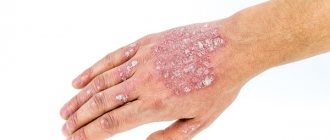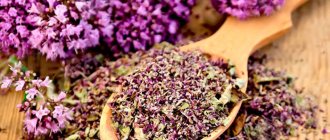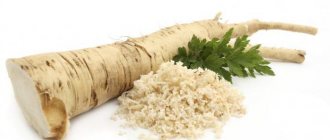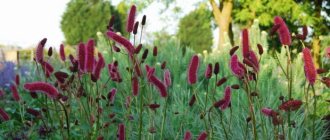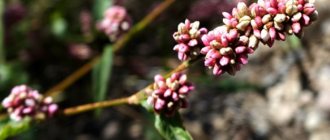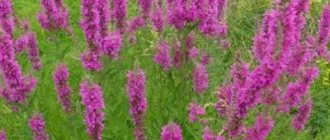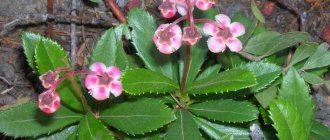Oregano is a perennial herb of the Lamiaceae family. The plant is native to North Africa and South-West Asia, but is found in all climate zones except the polar and subpolar. In Russia, oregano is widespread in Southern Siberia, the European part, and the Caucasus. It grows on mountain slopes, meadows, forest edges, and clearings.
In cooking, the herb is known by its Latin name - oregano. Found in recipes for European and Asian dishes. In Germany, most semi-finished products are prepared with oregano, where it is nicknamed “sausage grass.”
The plant received its Russian name “oregano” due to the pronounced smell of flowers and leaves. Popular names - forest mint, ladanka, matryoshka, motherwort, female grass, zenivka - appeared as the perennial's characteristics were discovered: aroma, nuances of flowering, beneficial properties.
The medicinal properties of oregano herb were first described by Hippocrates. He classified the plant as a means of healing wounds and relieving inflammation. A study of the herb by scientists from England showed that it contains substances that can replace the antibiotic.
But even before scientific evidence of the positive effect on the body, the mother began to be used in folk medicine to treat colds, nervous disorders, and intestinal pathologies.
What are the benefits of oregano, can it cause harm, how to make tea, other medicinal drinks and homemade cosmetics with the herb is described in this article.
Types, varieties of oregano
About 55 species are known. General signs:
- tetrahedral straight stem;
- oblong leaves;
- tubular pink, purple-pink, violet, reddish buds collected in corymbose paniculate inflorescences (see photo).
All types of grass take root well in areas with temperate and mild climates on slightly acidic soils. The most common are:
- Common oregano. It is cultivated on an industrial scale to obtain raw materials for medicinal preparations, the production of medicines, and essential oils.
- Dictamnus or Cretan oregano. It is grown for the production of oregano seasoning and antibacterial agents. The oil of the plant is used for rubbing against rheumatism to relieve pain.
- Syrian. Used in making seasonings, it has a strong aroma. Herbal oil can heal wounds.
- Marjoram. Cultivated to create seasonings. In folk medicine it is recommended to eliminate flatulence, treat neuroses, kidney and pulmonary pathologies.
- Greek. Used in the production of hot seasonings, it has a pungent taste. Stimulates digestive processes.
- Yellow-leaved. Used to create a tea mixture. Increases immunity.
Oregano (Origanum dictamnus)
Syrian oregano (Origanum syriacum)
Marjoram (Origanum majorana)
Greek oregano (Origanum vulgare subsp. hirtum)
Yellow-leaved oregano (Origanum vulgare 'Aureum')
Varieties have been bred from wild species of the herb that are used to decorate gardens, make spices, and medicinal drinks. Kinds:
- Decorative oregano. It is resistant to drought and heat, blooms for a long time, but is not suitable for food.
- Caramel. It smells pleasant, has a subtle taste, and is used in salads and teas.
- Rainbow. It has a high concentration of anthocyanins and is used in folk and official medicine to make medicines for viral diseases, heart and liver pathologies.
- Fragrant bunch. It produces a strong aroma and has a pleasant taste without bitterness. Used for canning and preparing sweets.
Oregano
Origanum rotundifolium 'Kent Beauty'
Where does oregano grow?
Flowering stem of oregano
Oregano is believed to be native to the Mediterranean. Currently, it has spread widely and grows wild in Europe and Asia in the temperate zone and subtropics. In Russia it is found everywhere except the Far North. Oregano blooms from June to August, attracting many bees, bumblebees and other insects; it also looks beautiful in flower beds.
Oregano spreads easily due to its creeping, highly branching rhizome, cold resistance and drought resistance. The stems of oregano are from 30 to 80 cm tall, erect, tetrahedral, with soft hairs, branching at the base. The leaves of oregano are pubescent, oblong-ovate, petiolate, located oppositely on the stem. The flowers are small, pink, of various shades, collected in corymbose panicles at the ends of the stems.
Medicinal and beneficial properties
Oregano is more often used in medicine. This type is the most common, its effect on humans has been better studied. To create medicines, the upper part of the herb with leaves and buds is used.
Briefly, what are the benefits of oregano:
- Calms the nervous system.
- Stimulates the functioning of the gastrointestinal tract.
- Activates urinary function.
- Accelerates the excretion of bile.
- Promotes cell and tissue restoration.
- Reduces blood pressure.
- Stimulates the removal of excess cholesterol.
- Helps relieve fever from colds.
- Activates the removal of mucus from the respiratory tract, relieves cough.
- Prevents the proliferation of fungi, viruses and bacteria in the body.
- Normalizes blood glucose levels.
- Strengthens the immune system.
- Relieves allergy symptoms.
- Promotes the removal of toxins and waste.
For the treatment and prevention of pathologies, infusions, decoctions, teas and alcohol tinctures with oregano are used. Depending on the type of product and disease, the consumption rate is established. For example, for tea, the daily dose is 2–3 cups.
Features of the impact on men and women
Oregano is used to eliminate gynecological problems, since its medicinal properties allow women to get rid of such problems:
- Thrush. The herb has a detrimental effect on the fungus that causes candidiasis. Taking forest mint stimulates a decrease in the activity of pathogenic microflora, and hygiene procedures with a herbal decoction relieve unpleasant itching.
- Deterioration of health during menopause. Due to the content of phytoestrogens, it prevents early menopause and maintains hormonal balance while reducing ovarian activity. The herb helps get rid of hot flashes and mood swings.
- Irregular and painful menstruation. Stimulates the contractility of the uterus, reduces discomfort during spasms, and accelerates the elimination of infections that affect the monthly cycle.
Men also benefit, but representatives of the stronger sex should take it carefully. Due to the content of female phytohormones, the plant can reduce potency; drink decoctions in short courses strictly in the recommended dosage.
Useful properties of oregano when used correctly:
- Elimination of urethritis. The herb relieves inflammation and pain when urinating.
- Getting rid of prostatitis. Herbal remedies improve blood circulation in the genitourinary area and help eliminate infections that cause pathology.
Indications for use
Oregano decoctions and teas are effective in complex therapy of the following conditions:
- colds and upper respiratory tract diseases;
- dysfunctions of the gastrointestinal tract;
- neurological diseases;
- diseases of the musculoskeletal system;
- disorders accompanied by convulsive conditions;
- pain of any origin;
- migraine;
- stress and insomnia;
- problems in the reproductive system in women.
We advise you to read: Spicy masala tea: the best recipes from India
Herbal tea made from oregano can stimulate lactation, but before using it, you need to consult a gynecologist and pediatrician.
Important! A decoction, tea or tincture of oregano cannot replace medicine in the treatment of a particular disease.
In such cases, medicinal products based on it are used as auxiliaries that can speed up recovery.
Contraindications, possible harm
Individual intolerance to plant components and allergies to herbs of the Yamnotaceae family are indicated as contraindications. Oregano can cause harm in case of overdose and non-compliance with the dosage regimen. It becomes dangerous in the following conditions:
- Hypotension. With low blood pressure, the grass provokes a worsening of the symptom, bringing the indicators to a critical point.
- Exacerbation of urolithiasis. Under the influence of oregano, stones and sand begin to quickly come out, and blockage of the ducts may occur.
Pregnant and lactating
You should not drink oregano during pregnancy. The herb stimulates uterine spasms, which can lead to miscarriage. A woman can use the plant to relieve skin inflammation and treat the throat during colds.
Doctors have different opinions about the possibility of consuming herbal drinks during breastfeeding. The advantage of the herb is that it can improve lactation. The downside is the likelihood of allergies in the child.
To reduce possible negative consequences, experts recommend adhering to the following principles:
- do not take 3 months after birth;
- After the first dose, observe the baby’s reaction for 24 hours;
- If the child has no signs of allergy, continue to consume oregano, but not more than 1 cup per day.
How to drink tea with oregano
Few people have not heard the saying attributed to Hippocrates: “There is medicine in a drop, but poison in a cup.” This also applies to medicinal herbs, which, if consumed in excess, can cause harm to the body.
You are allowed to consume tea with oregano no more than 3-4 times a day, 100-150 ml each. You can complement the taste of the drink with honey or cream, and also combine this plant with other medicinal herbs.
We advise you to read: How orthosiphon kidney tea works and when to drink it
Is it possible for children
Children are given oregano from the age of 3. The herb helps:
- speed up recovery from colds;
- prevent complications after the flu;
- eliminate sleep disturbances;
- get rid of hyperactivity;
- alleviate the course of bronchial asthma.
Oregano seeds (oregano)
Infusions can be used to treat a child’s oral cavity with stomatitis. The plant relieves inflammation and inhibits bacterial activity. At an early age, herbal decoctions help eliminate miliaria and other skin rashes. They are added to the baby's bathtub 1-2 times a week. Use a non-concentrated liquid to wipe cuts and insect bites to relieve inflammation and itching.
Recommendations from nutritionists for losing weight
Oregano is not a fat-burning agent, but it can be beneficial for weight loss.
The benefits of drinking herbal teas while dieting:
- acceleration of food digestion;
- cleansing the intestines of toxins;
- prevention of decreased immunity;
- restoration of liver functions;
- eliminating the risk of developing vitamin deficiency as a result of dietary restrictions;
- reduction of nervousness.
It can increase appetite; it should be consumed in the first half of the day after meals. Nutritionists recommend avoiding sweeteners in drinks.
Chemical composition, vitamins
Oregano contains essential oils that contain natural antibiotics carvacrol and thymol, which can suppress infections.
The chemical composition of the plant includes:
- tannins;
- ascorbic, ellagic acids;
- terpenes;
- naringin;
- geranyl acetate;
- polyphenols;
- flavonoids;
- pectins;
- glycosides;
- vitamins B, PP, K, D, A, E;
- macro and microelements (calcium, iodine, sodium, magnesium, phosphorus, iron, zinc, manganese, potassium).
Differences between oregano and thyme, mint, marjoram
External differences between plants can be seen in the pictures. Herbs differ in their chemical composition, which affects their medicinal properties:
- Thyme[/info-box] has a lot of bitterness and gum. The herb more effectively stimulates the production of digestive juices and is able to coat the gastric mucosa.
- Mint contains valeric acid, citral, menthol. The plant relieves muscle pain faster than oregano and is capable of dilating blood vessels.
- Marjoram is a type of oregano that has a similar chemical composition. It is characterized by a higher concentration of pectin substances, which accelerate the elimination of toxins, heavy metal salts, allergens, and prevent the accumulation of gases in the intestines.
Marjoram (Origanum majorana)
Peppermint (Mentha piperita)
Thyme or thyme (Thymus serpyllum)
Composition and nutritional value of oregano
The beneficial effect of oregano is explained by the chemical composition of the plant juice. The plant contains a lot of vitamins C, K, A, E, tannins, and up to 1.2% essential oil. It contains thymol and carvaclol. The high content of the latter makes the oil a strong antihistamine and natural antibiotic.
The plant also includes:
- potassium;
- magnesium;
- iron;
- manganese;
- calcium.
Calorie content 100 g – 265 kcal. The nutritional value:
- proteins – 10.9%;
- fats – 5.2%;
- carbohydrates – 83.8%.
Important! Oregano attracts bees. Therefore, be careful when collecting. Insects can attack without warning.
Release form
The following medicines from oregano are sold in pharmacies:
- Dried herbal infusions. Sold in cardboard and cellophane packaging. The advantage of the latter form is that you can see what oregano looks like and whether there are any other impurities. The collections are used to prepare medicinal drinks.
- Bagged tea. It differs from herbal collection in that the raw materials in the sachet are crushed. Products produced in grass-growing areas, for example, in Bashkiria, have the best quality.
- Essential oil. Sold in glass bottles under the following brands: STYX, Fragrant World, Oleos, Aspera. The liquid is colorless or yellowish, with a pronounced aroma. Used in medicine and cosmetology.
- AlteSon tablets. In addition to oregano, they contain extracts of St. John's wort, hops, and thyme. Indications for use: insomnia, hypertension, nervous disorders.
- "Urolesan". Together with the mother extract, it contains mint oil, fir oil, and hop cone extracts. Recommended for cholecystitis, pyelonephritis, cholelithiasis. Activates the removal of bile, relieves kidney inflammation.
Effects of oregano essential oil, research
In 2021, scientists from the USA concluded a study on the effect of oregano essential oil on skin health.
As a result of the work, the following properties of the oil were revealed:
- reduction of inflammation in skin cells;
- activation of restoration of damaged tissues;
- resistance to cancer development.
Experts noted that the healing properties of the herb oil manifest themselves faster in concentrated form. We also noticed that carvacrol imparts antiseptic and anti-inflammatory properties.
Benefits and harms for various diseases
Oregano can influence all internal organs and systems. The herb has positive and negative effects depending on the type of pathology and compliance with the dosage regimen:
- Diabetes. In addition to lowering sugar and cholesterol levels, oregano increases the body's sensitivity to insulin and stimulates the removal of metabolic products. It is useful to take a decoction of the plant 100 ml 2 times a day.
- Pancreatitis. The herb relieves inflammation of the pancreas and activates the production of digestive enzymes. The herbal decoction should be taken during the period of remission, 2 tablespoons before meals. During active inflammation, you should not drink herbal remedies: they create an increased load on the organ and provoke increased pain.
- Gastritis. Oregano is useful for pathologies with low acidity, stimulates the production of gastric juice, and prevents the development of Helicobacter bacteria. During illness, it is recommended to consume 30 ml of herbal infusion for 2 weeks before meals. If you have gastritis with high acidity, you cannot drink oregano in its pure form: the condition of the mucous membrane may worsen.
- Cholecystitis. Oregano promotes the removal of bile and activates the motor function of the gallbladder. The herb is taken for chronic pathology in the form of an infusion, 1 tablespoon before meals. Herbal remedies are contraindicated in case of blockage of the ducts and during an exacerbation: they can cause deterioration of the organ due to increased release of bile.
- Cystitis. The plant relieves inflammation and eliminates infectious processes. It is recommended to take it as tea 3 times a day and use the herbal decoction for medicinal baths.
- Prostatitis. During an exacerbation, you should drink 30 ml of oregano decoction or 1 teaspoon of tincture 3 times a day. The period of use is 7 days, long-term use worsens male strength.
- Mastopathy. Using the plant relieves breast swelling, eliminates and prevents hardening, and stops tissue proliferation. The herb is taken as an infusion of 100 ml 2 times a day or compresses are made at night.
- Angina. To eliminate purulent foci, you need to gargle with oregano infusion or water with essential oil up to 6 times a day.
Application options
Oregano has found wide use in medicine and is a common ingredient in folk recipes. Let's look at some of them:
- Water infusion. Add 2 tbsp. l. oregano to 200 ml of hot water. Close the lid and keep in a water bath for about 15-20 minutes. Remove from heat and let steep for 45-60 minutes, strain. Drink 100 ml 2-3 times a day.
- Tea. 1 tbsp. l. Pour 200 ml of boiling water over the plants and let it brew for 5-10 minutes, strain. Take 1-2 times a day. Oregano tea is most effective for respiratory infections, increased stress and insomnia.
- Tincture. Mix 50 grams of oregano herb and 200 ml of alcohol (medicinal). Pour the mixture into a glass container with a tight lid and place in a cool, dark room for 10 days. Take 1-2 tsp of oregano tincture. per day (2-3 hours before going to bed).
- A remedy for “nervous” disorders. Required: 1 tbsp. l. oregano, St. John's wort, mint, valerian and honey; 250 ml hot water. Pour water over the herbs, add honey, mix thoroughly. Let it brew for 15 minutes and take once, 1-3 hours before bedtime.
Oregano has also become firmly established in cosmetology. A decoction of the plant can be used for morning washing and removing traces of makeup from the face. The product destroys harmful bacteria on the surface of the skin and opens pores.
In cooking, the plant is used to add a special aroma and taste to vegetable salads, pasta, pizza, soups and fish dishes.
Oregano is a universal plant used in folk medicine, as well as in modern cooking and cosmetology. To get exceptional benefits from the product, you need to carefully follow the preparation technology.
Features of brewing tea, recipes
Depending on the purpose of preparation, different tea recipes are used.
To obtain an aromatic drink with a pleasant taste, brew the herb as follows:
- Pour 1 teaspoon of raw material into a glass container.
- Pour 200 ml of boiling water.
- Let it sit for 5 minutes.
- Before use, strain and add a spoonful of honey.
When treating diseases, a different preparation method is used: high temperature can destroy some of the beneficial substances of oregano. Brewing rules:
- Heat 400 ml of water to 70 degrees.
- Pour 2 teaspoons of herbs into a thermos.
- Pour liquid into the container.
- Let it sit for 30 minutes.
For people with low blood pressure, it is useful to add 0.5 teaspoon of black or green tea to the brew. These components will prevent the worsening of hypotension.
What herbs does it go with?
The plant is often combined with other herbs.
Examples:
- Thyme. Complements the antitussive effect. The herbs are used together for bronchitis, whooping cough, colds, and flu.
- Blooming Sally. Increases the immunomodulatory effect, enhances the effect on the gastrointestinal tract.
- Mint. Complements the calming effect, helps fight depression, insomnia, and relieve headaches.
- Tarragon. Increases the effect against parasites. Tarragon stimulates the cleansing of the intestines from worms and removes their waste products.
- Clover. It enhances the effect on women’s hormonal levels, as it also contains phytoestrogens.
- St. John's wort. Helps relieve inflammation, eliminate depression, and normalize digestive processes. St. John's wort neutralizes the ability to increase the level of gastric juice; the herb is useful for gastritis with high acidity.
- Rose hip. Strengthens the diuretic and diaphoretic effect. A mixture of herbal components is effective for colds accompanied by fever.
- Cowberry. The berries and leaves of the plant activate the production of gastric juice, enhance the effect of antibiotics, and increase effectiveness in the treatment of pancreas and infections.
- Yarrow. Helps in cleansing the liver and bile ducts. A mixture of herbs is recommended for use for cholecystitis.
Classic recipes for decoction, infusion, tincture
Options for preparing medicinal products:
- Decoction. Pour 10 g of oregano into a deep container and add 250 ml of hot water. Place in a steam bath and simmer for 30 minutes. After cooling, strain. Cooking over an open fire is not recommended: boiling destroys the active components of the herb.
- Infusion. Take 1 tablespoon of herb, pour it into a container with a lid, pour 400 ml of water heated to 70 degrees. Close and wrap. Leave for 30–120 minutes depending on the desired concentration. Half an hour is enough for use, for external use for children - 1 hour, for adults - 2 hours.
- Tincture. Can be made from vodka, medium-strength moonshine or alcohol. The last component must be diluted to 40 degrees with boiled water. Step-by-step preparation: select dry oregano inflorescences, pour 2 tablespoons of the raw material into a jar, pour 0.5 liters of the alcohol component, close the lid tightly. Place in a dark place, leave for 3 weeks, filter. Store in a cool room or refrigerator.
When to collect, how to dry
Oregano is harvested in the summer during the flowering period - in July-August. You can collect field grass, but it is better to plant it on your own plot. This kind of oregano is safer.
Features of the workpiece:
- We select specimens without signs of damage by insects and diseases. Plants crushed by animals are also not suitable: damaged stems lose some of their beneficial juices.
- Cut off the tops of the oregano, no lower than 25 cm from the ground.
- We dry the grass under a canopy outside or in a room with good ventilation. The finished raw material becomes crumbly, the stem breaks without effort.
You can store oregano for 1 year in bags made of thick natural fabric or paper bags. The grass should be hidden from direct sunlight and not allowed to get wet.
Use in cooking
Oregano is found in recipes from residents of all continents. It is used as a seasoning for meat and fish. The herb is also added to sauces, soups, and side dishes. For example, in Italy, oregano sauce is an essential ingredient for pizza. Fresh leaves complement vegetable salads and tonic drinks. In Asia, marinades for preserving mushrooms and vegetables with oregano are popular.
Jam is made with herbs. To create a fragrant delicacy, it is enough to use 1–2 branches of the plant per 1 kg of berries and sugar.
Oregano seasoning in cooking
Oregano is also used in cooking. There, this plant is used to prepare oregano seasoning (another name for oregano). The herb, crushed to a powdery state, has a bitter and tart taste, gives dishes a special taste, and is often used together with potatoes and as part of preserves. Housewives often use it to flavor salads or pizza.
It is worth noting that using the spice for medicinal purposes is useless. Oregano that is not filled with liquid and heated to a temperature above 40°C loses its medicinal properties. In addition, in dry form it practically does not have the therapeutic effect discussed above.
Application in cosmetology
The plant helps take care of skin and hair. You can prepare the following cosmetics at home:
- For facial skin. Mix 5 g of baking soda, 10 g of chopped kelp, 30 ml of oregano decoction until a composition with the consistency of sour cream is formed. Apply the product to the face in circular movements and leave for 3 minutes. Wash off with cool water. We use it once a month. This composition cleanses the face of dead cells, making the skin look younger.
- Hair rinsing. To eliminate fragility and accelerate growth, use a decoction of oregano or water with a few drops of herbal essential oil. We rinse our hair with a medicinal product after each shampoo.
- Acne mask. Prepare from 5 g rye flour, 10 g mother flour, 3 drops of pine oil. Grind the herbal raw materials into powder, mix with 2 tablespoons of hot water, leave for 10 minutes. Add the remaining ingredients and mix until a thick, homogeneous mass is obtained. Apply to problem areas 3 times a week for 5 minutes, rinse off.
- Infusion for a bath. The procedures help improve skin health and prevent the development of pulmonary pathologies. Prepare the liquid as follows: pour 100 g of oregano into 300 ml of hot water, leave for 4 hours, filter. The resulting composition is poured in small portions onto hot stones during the bath procedure.
Using oregano for breast growth
Today, many women and young girls dream of beautiful, toned and lush breasts. However, not everyone has been so generously endowed by nature, so the fair sex has to look for their own ways to achieve perfection. Some people train hard in gyms, some seek salvation in alternative medicine, some try to get the desired effect with the help of expensive cosmetics, and the bravest ones go under the knife of a plastic surgeon. But the most popular and affordable way to do breast enlargement on your own is oregano.
It contains large quantities of essential vitamins, beneficial microelements and phytoestrogen, which have a beneficial effect on the mammary glands and increase their volume. Breast enlargement occurs due to the fact that the female body receives phytoestrogen in an enhanced mode, which promotes the production of female sex hormones.
To enlarge your breasts, it is recommended to drink tea or oregano decoction daily. It can be prepared very easily. Pour 2 tablespoons of dry herb into 200 ml of hot water, put on fire and simmer over low heat for about 10 minutes. After removing from heat, the broth should be left to steep for 20 minutes. The decoction is ready.
Drink the decoction three times a day; this must be done before meals. Dosage per dose – half a glass. However, you need to use oregano decoction very carefully, because it contains phytoestrogen, the excess of which can have a detrimental effect on women's health.
Therefore, it is recommended to drink the decoction for one month, then pause for 3 weeks. After this period, taking the decoction can be resumed.


